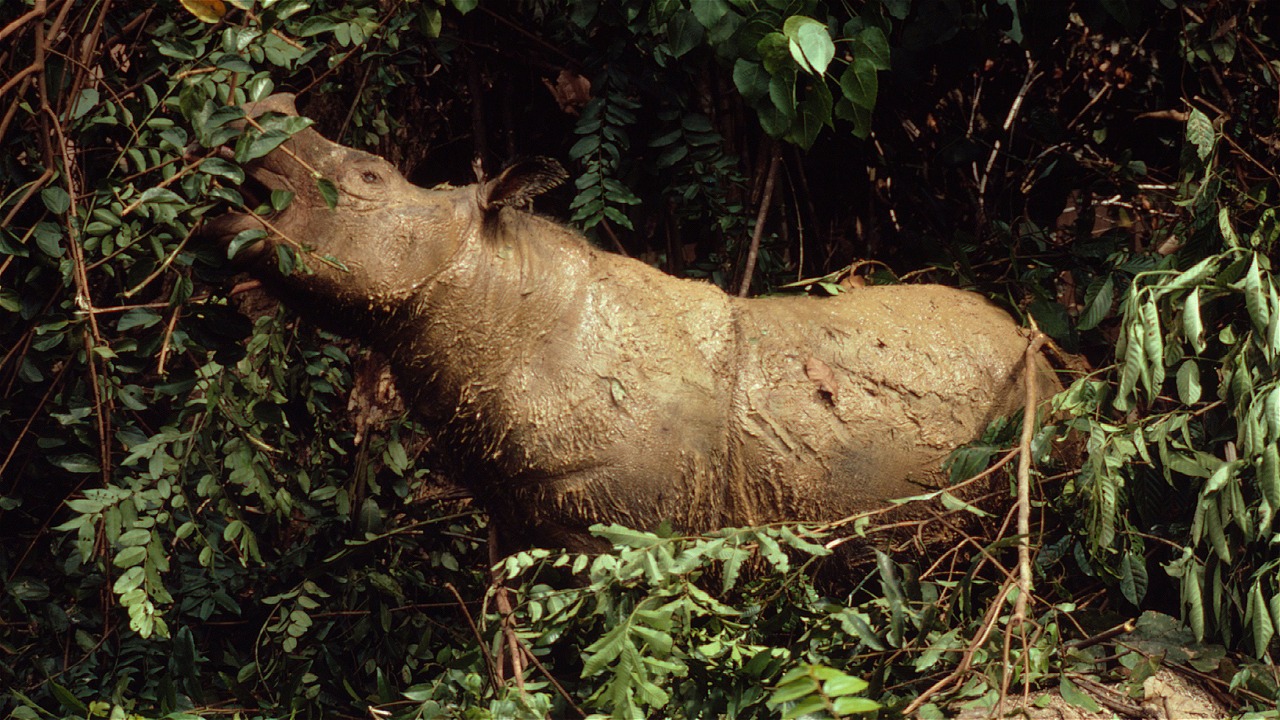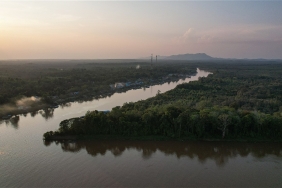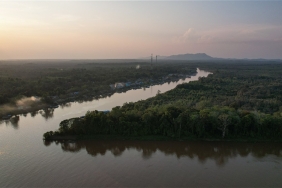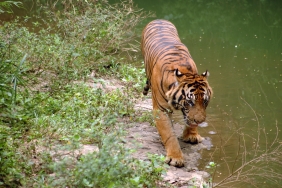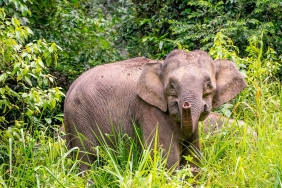VIRTUAL RUN RHINO RUN: RUNNING TOGETHER TO SAVE RHINOS IN INDONESIA
By: Natalia Trita Agnika
This September, WWF has reached the age of 55 years in conducting various conservation programs in Indonesia. These programs began with the Javan Rhino (Rhinoceros sondaicus) conservation program in Ujung Kulon in 1962.
Rhinos are solitary animals that are very difficult to observe. For example, members of the Rhino Monitoring Unit of Ujung Kulon National Park (TNUK), who often go in and out of the forest to monitor the presence of Javan rhinos in the TNUK area, almost never meet directly with these rare animals. The presence of these one-horned rhinos can be monitored thanks to camera traps (camera trap) installed in locations that are favorite places for rhinos, such as feeding and wallowing places.
The challenges of Javan Rhino conservation are increasing year by year. The threat of natural disasters arises because the area where the Javan Rhinos live is on the Ujung Kulon Peninsula, quite close to Mount Krakatau. In addition, the Ujung Kulon Peninsula is also quite close to the fault where the Australian and Asian continental plates meet, which poses a risk of tsunamis. If a natural disaster or disease outbreak were to hit the area, the Javan Rhinos would become extinct in a short time.
Another threat also arises from the invasion of the langkap plant (Arenga obtusifolia) which threatens the availability of food for Javan Rhinos because this plant blocks sunlight which makes it difficult for rhino food to grow.
The commemoration of World Rhino Day on September 22 reminds us that there are currently five rhino species left in the world, two of which are found in Indonesia, namely the Javan Rhino (Rhinoceros sondaicus) and the Sumatran Rhino (Dicerorhinus sumatrensis). That's why our concern for the preservation of these charismatic animals is very much needed. We can participate in rhino conservation through the Nature Guardian program.
Aside from being an endangered animal and the pride of Indonesia, rhinos play an important role. Did you know that rhinos have an important service to maintain the quality of the forest? By feeding as a "herbivore browser" (eater of leaves, young branching, and fruit), rhinos can help reduce global warming because the growth of food tree vegetation characterized by the emergence of new leaf shoots will absorb more carbon dioxide than old leaves.
Virtual Run Rhino Run
Another interesting fact about rhinos is that these endangered animals can run fast! Despite their heavy bodies and short legs, rhinos can run 48-64 km/h. We can also run vigorously like rhinos. In conjunction with World Rhino Day, there will be a Virtual Run Rhino Run event. We can run while carrying the message of conservation for rhinos.
Through the eventVirtual Run Rhino Run, a collaboration between WWF-Indonesia and Virtual Run Indonesia, the public is invited to run in any location with a time that can be chosen by themselves. Registration can be done at virtualrun.id starting October 1, 2017 with a registration fee of Rp 190,000. After that, participants must run or walk 10 kilometers, which can be done several times until they reach a minimum target of 10 kilometers in a certain time span according to (21-29 October 2017). When running, use a running app on your smartphone with GPS enabled. The recording results from the application will be submitted to virtualrun.id.
Runners who successfully complete a minimum of 10 kilometers in that time duration and have reported their results to vitualrun.id will receive a Virtual Run jersey, finisher medal, and e-certificate which will be sent to the runner's address after all verification processes are complete. All profits from this run will be donated to WWF-Indonesia for rhino conservation efforts. You can also add your donation amount on the registration page.
Don't run away from the fact that rhinos are on the brink of extinction. Let's save rhinos by running in the Virtual Run Rhino Run!

